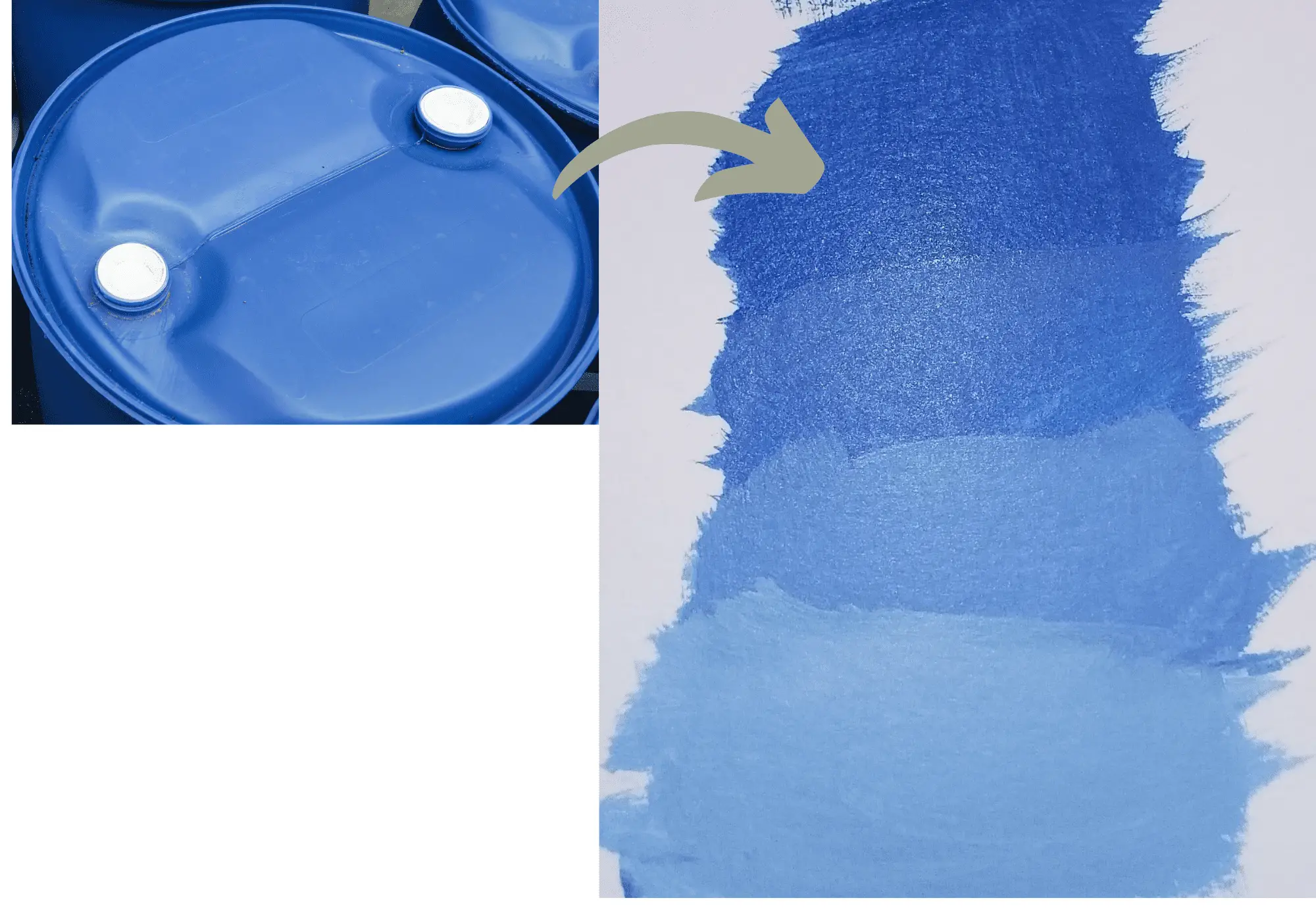Blue is one of our favorite colors. But it is known as a primary color that can not be made by mixing other colors. However, that’s not essentially true. So what colors make blue?
The colors that make blue are cyan and magenta. Mix 10 parts cyan with 1 parts magenta for the best results. The mixed blue can be muted by mixing it with light orange color. Different shades and tints of blue can be made by mixing black and white respectively in different ratios.
Using magenta, cyan, and yellow as primaries (CMYK color model) you can mix all the colors including blue. Also learning how to blend blue correctly makes it easier to color match a reference.
Colors that make blue: cyan and magenta
The traditional blue color or the primary blue color can be mixed by combining cyan and magenta. You can get the best results by mixing 10 parts cyan with 1 part magenta. Cyan needs to be mixed more with a little magenta to get the desired blue color. I have used the Golden online color mixer to view the mixed color.
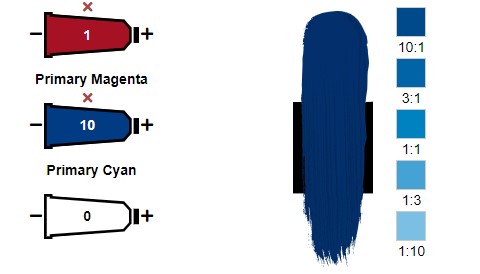
By using cyan, magenta, and yellow as the primary colors you can mix any color you need, including the colors taught to us as primary colors in school which are red and blue. These ‘new’ primary colors are used in the CMYK color model. This color model is used by printers to cut down on cost by making any colors from the primaries.
I have written a whole article about acrylic paint color mixing charts. You can learn a lot about mixing all the primary and secondary colors there. There is a free downloadable color mixing chart and a grid as well.
In the rest of the article, we will talk about mixing blue in more detail. I will be using terminologies like hue, shade, and tints. If you do not understand them refer to the color terminologies box below.
Color Terminologies
There are different color terminologies you need to understand when discussing colors. I have described them below;
Hue: Hue means colors such as primary colors( red, blue, yellow) and secondary colors (orange, green, purple).
Value: The darkness or lightness of a color. Every color has a value. You can see this if you see a black and white photo of colors. Light colors like yellow are high in value while darker colors like red are low in value. The color black has the lowest value while the color white has the highest value.
Shade: Shade is the darker color you get when mixing a hue (color) with black. You can make dark to light shades by mixing in more or less black.
Tint: Tint is the color you get by mixing a hue (color) with white. By changing the amount of white you mix, you can get lighter tints.
Mass stone: Color of paint when painted thickly, straight out of the tube without diluting.
Undertone: Undertone can be seen when you scraped the paint on a white surface. Undertones can be different from mass tones because colors are not pure although there is a single pigment. Impurities of some colors give a different undertone. (e.g. Phthalo blue has a dark blue mass tone and greenish undertone)
Color bias: Every color (even primary colors) has a bias towards another color because there are hidden color pigments in the pure colors. (e. g. Phthalo blue has a green color bias while ultramarine blue has either green or red color bias)
Complementary colors: Colors on the opposite side of the color wheel. When complementary colors are mixed, a neutral or muted color will be made.
Cool colors: Cool colors are colors that remind you of the ocean and water. They include blue, green, and purple.
Warm colors: Warm colors will remind you of sun and fire. They are red, orange and yellow.
I used student-grade magenta and cyan acrylic colors to mix blue on watercolor paper. I mixed in cyan with a little magenta and got a dark intense blue color. If you are interested in seeing me mixing blue colors, you can watch the small video clip below.
Following is the mixed blue color I have got.

As in the image the right blue color can be seen in the 3rd color swatch from the left. To the right, I have increased the magenta mixed in each swatch. When you mix more magenta mixed color become more purplish. I have also mixed white on the top part of color swatches to make some tints.
I have used student-grade acrylic paints when mixing colors. That’s why you see some color swatches transparent. If you want excellent coverage and pigment concentration, go for artist-grade paint.
The best choice for artist-grade acrylic paint that I recommend is Golden acrylic paint (Link to view on Blick Art Material). They are pioneers of acrylic paint and offer the best quality.
If you can not afford artist-grade acrylic paint, you can use high-quality student-grade acrylic paint. I have written a whole article about comparing 5 student grade acrylic paints and picking a winner. You can make the best choice for affordable acrylic paint by reading that article.
Isn’t blue a primary color that cannot be mixed?
We were all taught in the school that red, yellow, and blue (RYB) are primary colors that can make all the other colors. This is not essentially true. When a color wheel is made with RBY colors, the colors are dull. But if we use cyan, magenta, and yellow as primaries, we can mix more bright and vibrant colors with higher value.
The same cyan and magenta can be used to create blue colors. Any color in the color spectrum can be created by using CMYK primaries (K refers to black). This is why printers use CMYK primaries. This way you only need to insert these 3 primary colors into the printer. The printer will print any color.
So there is no need to use other color inks for the printer and it is a cost-effective way. If you want to learn more about CMYK and RYB colors you can check the article I have written. You can also see the color wheels I have made with acrylic paint for each color system.
Mixing different shades and tints of blue
Shades can be made by mixing different amounts of black with blue. As same, mix white in different amounts to make tints. The tints and shades are blue mixed using cyan and magenta. The following image shows you different tints of blue.

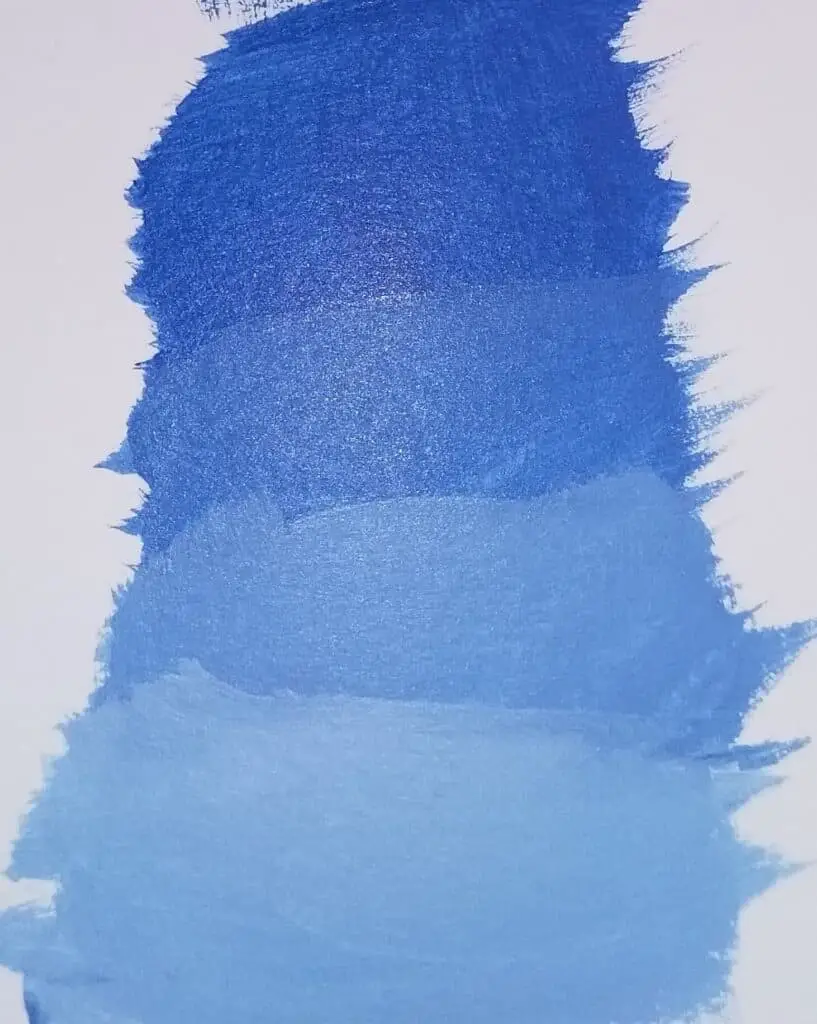
Following are some of the black color shades as well as tints. Make sure to mix a very little black when making shades. The percentages on the top indicate the amount of black or white mixed into the color.
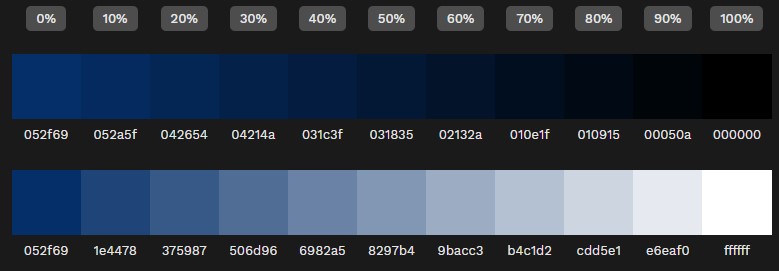
How to mute the blue color?
Almost all natural colors we see are muted and earthy colors. In most arts, what you will see are muted colors. There are very less bright and vibrant colors. You can mute any color by mixing it with its complementary color. Complementary colors lie on the opposite side of the color wheel.
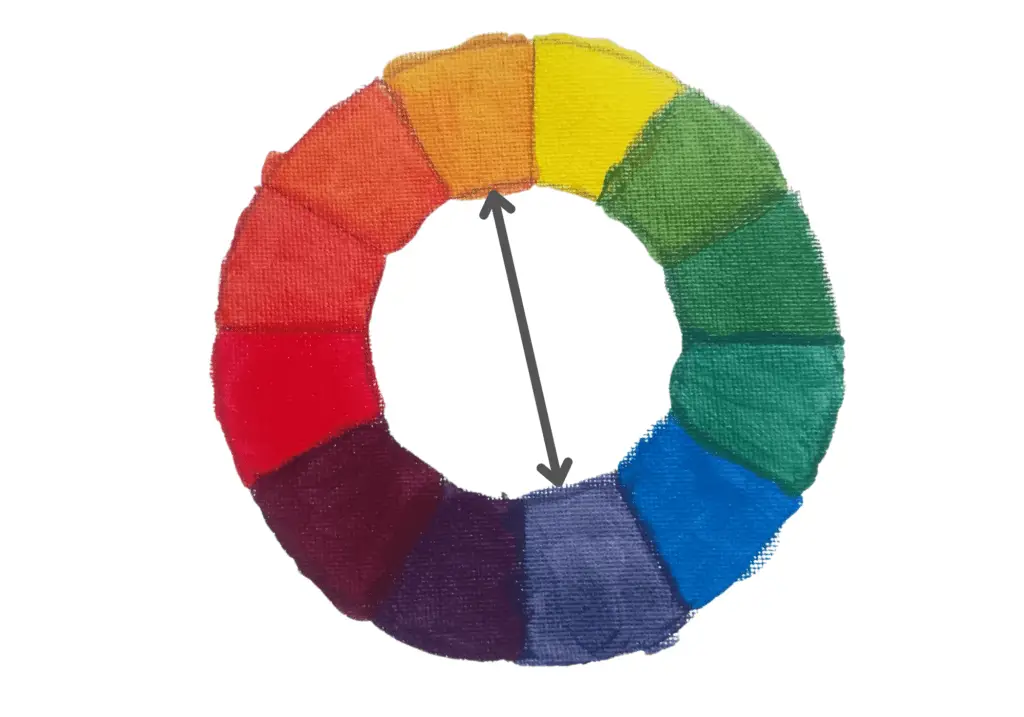
According to the CMYK color wheel I made, the complementary color of blue is yellowish-orange. Mix a dash of light orange to the mixed blue color. It will yield a nice muted blue color as below.
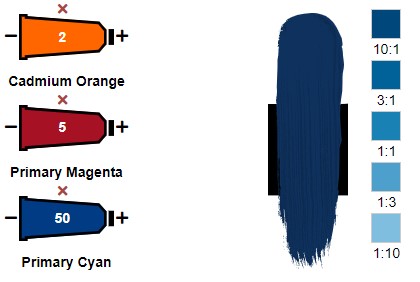
In the color mixer, I used cadmium orange to mute the mixed blue color. Mix a dash of magenta with cyan to make blue. Then mix a dash of orange. You will get a nice muted blue color. By adding more orange, you can mute the blue more.
Steps of mixing a blue color to match a reference
When you are trying to match a color of a certain object, there is a set process to it. By following this process, you will be able to match the color of a reference very easily. Below I have laid down the step-by-step process. I will be using the image of blue barrels as the reference.
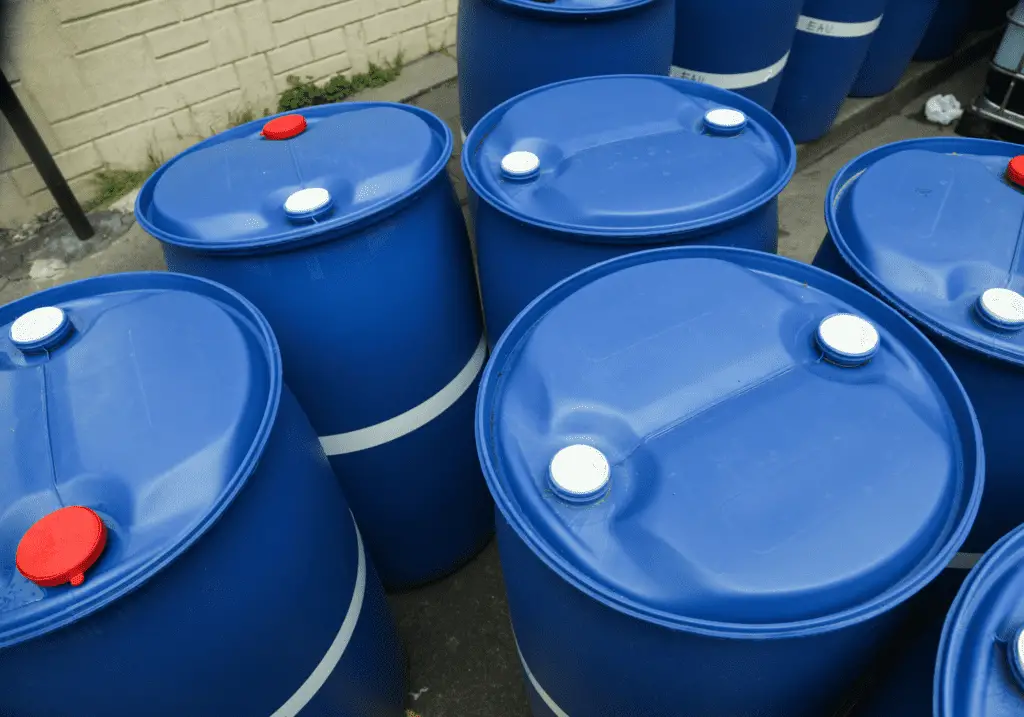
Step 1: Make a color wheel with cyan, yellow, and magenta as the primary colors. You can also refer to the color wheel I have made. The following video of making the color wheel may also help.
Making a color wheel for the particular paint brand you use will be the best way to learn about the paint you use. Because the colors can differ according to the brand.
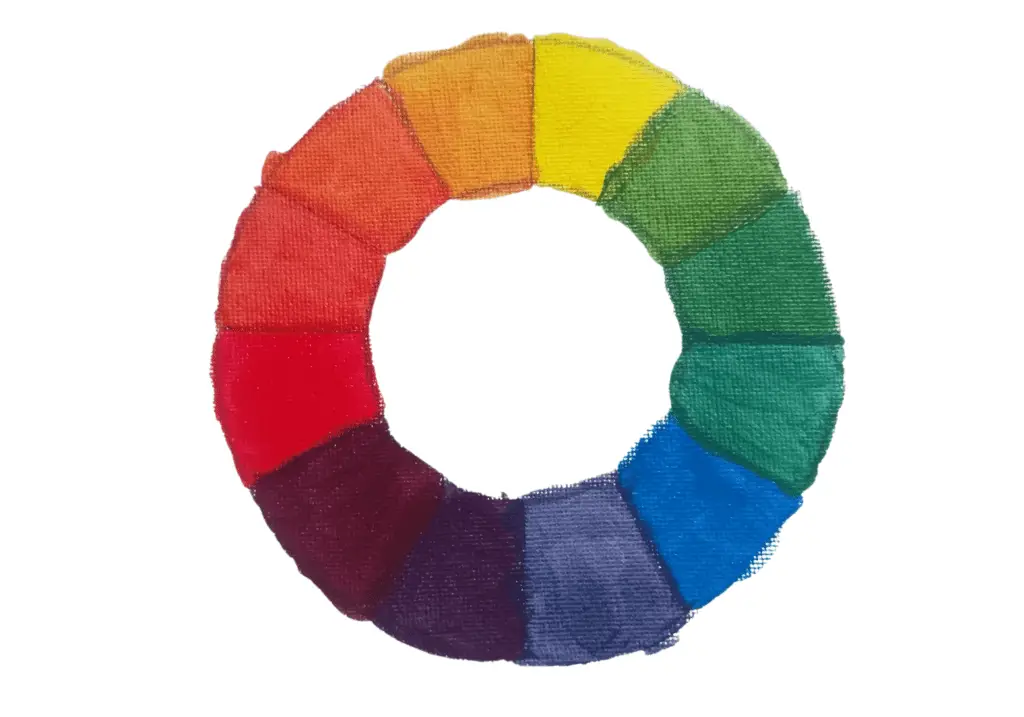
Step 2: Match the hue of the blue in the reference photo to a hue in the color wheel. The best match for hue is blue which is between cyan and magenta but leaning more towards cyan.
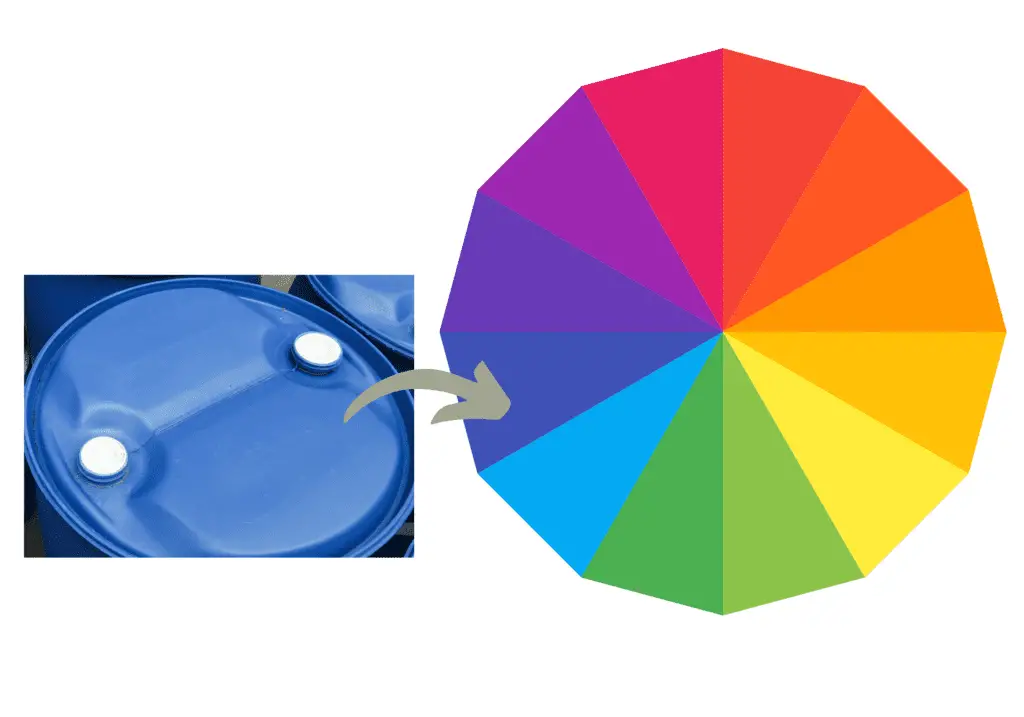
Step 3: determine the vividness or dullness of the reference color. If it is a dull color you need to mix the complementary colors and mute the blue hue. For me, the vividness of this blue color is okay. So I moved to the next step.
Step 4: Next match the value of the color by mixing in white. I wanted to increase the value of the mixed blue. So I mixed in a very little titanium white. Again the amount you want to mix depends on the quality of the paint you are using.
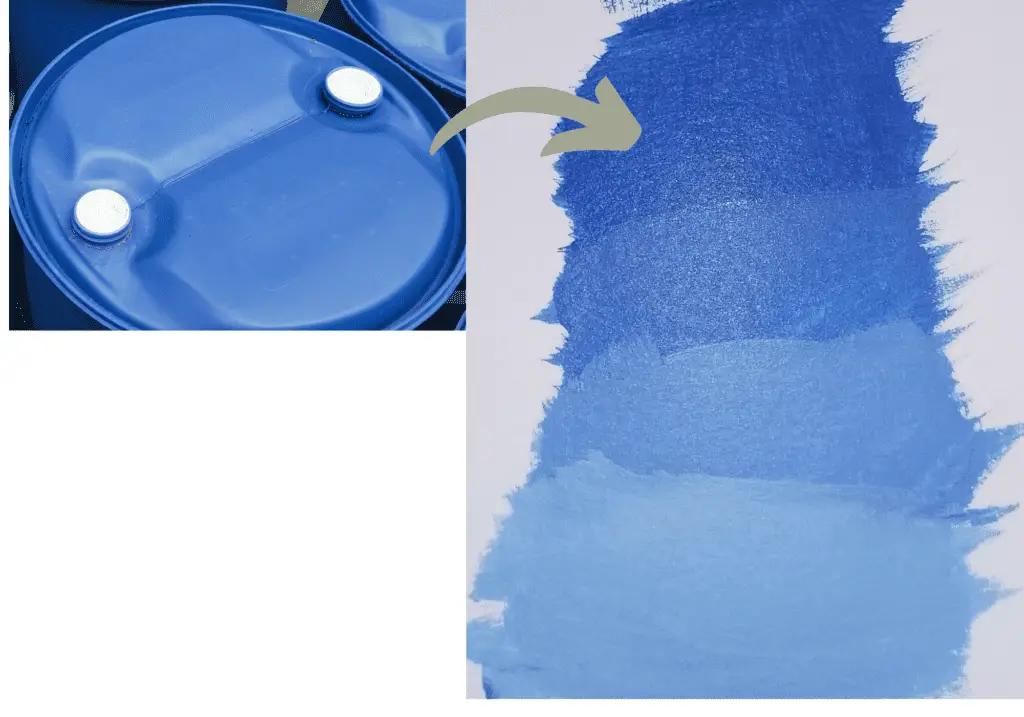
You can change the amount of white you mix in and paint the shadows and highlights of the barrel in the reference image. If you feel like the color is too vivid at some point, mix a dash of light orange color to mute the blue. This is the exact process you need to follow to match any color to a reference.
Mixing blue without blue: with Green and purple
There is another way of making blue color. That is making blue by mixing green and purple. Let’s see how it is possible to make blue with purple and green.
Blue + red = purple
Blue + yellow = green
So as you see in the color wheel, red and green are on opposite sides of the color wheel. As they are complementary colors the red will be canceled out by green. Also as yellow and purple are complementary colors and they also cancells out. The color you are left with now is blue and it will be shown after mixing purple and green.
Essentially what you need to mix is dioxazine violet or quin violet and phthalo green in a 1:1 ratio. Following will be the results you get.
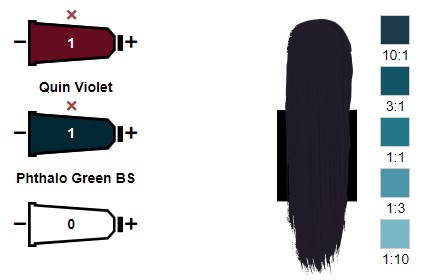
As you can see the blue color we get is very dark. You will need to thin this blue color or mix it with white to get a lighter blue color.
Mixing different hues of blue using different blue colors
There are different beautiful hues of blue color. You can use them in your painting or artwork to create different moods and scenes. These blue colors can be mixed using the primaries as mentioned before. Also, you can make them by mixing existing paint colors.
Below I will be discussing the interesting blue hues available, how to mix them with available blue colors, their hex codes, and RGB and CMYK values of the color. With RGB and CMYK values, you can determine the relative amount of primary color you need to mix to get a certain blue color.
The below color mixing is related to Golden Heavy Body Acrylic Paints. However, it is highly related to any other acrylic paint brand as well. I have also included the parts of paints that need to be mixed in front of the paint name.
Navy blue: Mix 98 Ultramarine Blue * 1 Light Phthalo Blue
Hex #000080
RGB 30, 25, 139
CMYK 78, 82, 0, 45
Royal blue: Mix 1 Phthalo Blue Green Shade * 2 Cobalt Blue * 1 Ultramarine Blue
Hex #101D6B
RGB 18, 30, 107
CMYK 83, 72, 0, 58
Azure: Mix 3 Ultramarine Blue * 1 Light Phthalo Blue
Hex #007FFF
RGB 0, 127, 255
CMYK 100, 50, 0, 0
Prussian blue: Mix 2 Ultramarine Violet * 2 Primary Cyan * 1 Turquoise
Hex #003153
RGB 0, 49, 83
CMYK 100, 41, 0, 67
Cobalt Blue: Cobalt Blue acrylic color
Hex #0047AB
RGB 0, 71, 171
CMYK 100, 58, 0, 33
Teal: Teal acrylic color
Hex #008080
RGB 0, 128, 128
CMYK 100, 0, 0, 50
Turquoise: Mix 1 Phthalo Green Blue Shade * 11 Titanium White
Hex #40E0D0
RGB 64, 224, 208
CMYK 71, 0, 7, 12
Sapphire blue: Mix 5 Cobalt Blue * 1 Ultramarine Blue * 1 Light Ultramarine Blue
Hex #0F52BA
RGB 15, 82, 186
CMYK 92, 56, 0, 27
Other than these blue hues, sky blue is a tint of blue you will need in most paintings when doing the sky. I have written a whole article about how to mix sky blue by matching a sky in a reference photo.
As you can see, to mix most of the blue colors ultramarine blue, cyan, and phthalo blue are used. You will be able to mix any blue color using these colors. So consider adding them to your color collection.
The color bias of different blue colors
It is also important to mention the color bias of different colors. Color bias occurs due to the impurities in even the purest pigments. As an example, ultramarine blue has a red undertone. Hence it is a warm blue color and best for mixing purple, but not a good choice to mix with green.
Phthlao blue has a green undertone. It is the best blue to mix with green or greenish-blue colors. Because of the green undertone, phthalo blue is a cooler color because green is a cool color.
When you are mixing colors, remember to check the color bias. Always go with the color bias and mix the colors where the color bias is. (e. g. using ultramarine blue to mix warmer blue colors and purple)
You can check the color bias of any color by scraping it on white paper. The undertone it has will be the color it is biased towards.
Using blue to create different effects and emotions
Blue is needed to create different moods and effects in the painting. Below I have included a table with different blue hues and where they are best suited to your artwork.
| Blue hue | Hex code | Where it is best suited |
| Navy blue | #000080 | This bright vivid blue color represents confidence, power, authority, sophistication, and elegance |
| Royal blue | #101D6B | This deep vivid blue color has a historical relationship with the British royal family. It conveys trust and authority and is thus used in many uniforms |
| Azure | #007FFF | This light but vivid blue color denotes calmness, nature, and richness |
| Prussian blue | #003153 | This deep blue color is synthetic and best used on starry nights and great waves |
| Cobalt Blue | #0047AB | This bright vivid blue color denotes calmness, trustworthiness, and authoritativeness |
| Teal | #008080 | This greenish-blue color represents faith, trustworthiness, and open communication |
| Turquoise | #40E0D0 | This sea green blue represents protection, good fortune, wisdom, and hope |
| Sapphire blue | #0F52BA | This bright, vivid blue color represents faith, hope, belief, spiritual insight, and good fortune |
Conclusion
Although blue is known as a primary color it can be mixed using magenta and cyan. You need to mix more cyan and less magenta for the blue color. This mixed color can be muted using a light orange color. You can also make different tints and shades of blue mixing white and black respectively. You can also mix available blue colors to create different hues of blue.

